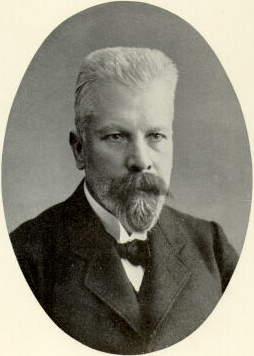<Back to Index>
- Chemist Eduard Buchner, 1860
- Architect William Thornton, 1759
- Admiral Andreas Vokos (Miaoulis), 1768
PAGE SPONSOR

Eduard Buchner (20 May 1860 – 13 August 1917) was a German chemist and zymologist, awarded with the 1907 Nobel Prize in Chemistry thanks to his work on fermentation.
Buchner was born in Munich to a physician and Doctor Extraordinary of Forensic Medicine. His older brother was Hans Ernst August Buchner. In 1884, he began studies of chemistry with Adolf von Baeyer and of botany with Professor C. von Naegeli, at the Botanic Institute in Munich. After a period working with Otto Fischer in Erlangen, Buchner was awarded a doctorate from the University of Munich in 1888.
The experiment for which Buchner won the Nobel Prize consisted of producing a cell-free extract of yeast cells and showing that this "press juice" could ferment sugar. This dealt yet another blow to vitalism by showing that the presence of living yeast cells was not needed for fermentation. The cell-free extract was produced by combining dry yeast cells, quartz and kieselguhr and then pulverizing the yeast cells with a pestle and mortar. This mixture would then become moist as the yeast cells' contents would come out of the cells. Once this step was done, the moist mixture would be put through a press and the resulting "press juice" had glucose, fructose, or maltose added and carbon dioxide was seen to evolve, sometimes for days. Microscopic investigation revealed no living yeast cells in the extract. One interesting thing is that Buchner hypothesized that yeast cells secrete proteins into their environment in order to ferment sugars, instead of the fermentation occurring inside the yeast cells, which is the actual mechanism.
Though believed by some that Büchner flask and Büchner funnel are named for him, they are actually named for the industrial chemist Ernst Büchner.
Buchner received the Nobel Prize in Chemistry in 1907.
Buchner married Lotte Stahl in 1900. During World War I, Buchner served as a Major in a front-line field hospital at Focşani, Romania. He was wounded on August 3, 1917 and died of these wounds nine days later in Munich at age 57.